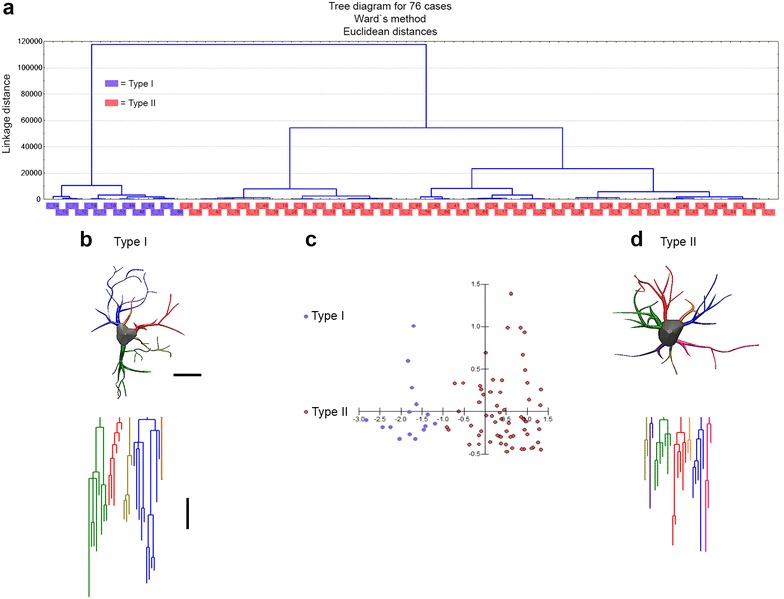Fig. 4.

Morphological phenotypes of astrocytes in the molecular layer of the dentate gyrus (MolDG) of 6 mo. adult mice raised in standard environment (Y SE mice). Cluster discriminant analysis (Ward’s method) and three-dimensional reconstructions of MolDG astrocytes from five Y SE mice. a Dendrogram groupings of 76 dentate gyrus astrocytes indicated two main morphological phenotypes (type I and type II). b Three-dimensional reconstruction of an astrocyte with mean values closer to the mean values of morphometrical features of type I astrocyte. c Graphic representation of the discriminant analysis. The variable that contributed most to cluster formation was convex-hull volume (p < 0.016). Type I (blue dots) showed similar X–Y dispersion as compared with Type II (orange dots) astrocytes. Astrocytes were reconstructed from both rostral and caudal regions of the dentate gyrus; cluster analysis was based on multimodal or at least bi-modal morphometric features of astrocytes (MMI >0.55). d Three-dimensional reconstruction of an astrocyte with mean values closer to the mean values of morphological features of type II astrocyte. Below the three-dimensional reconstructions are the corresponding linear dendrograms of each arbor of astrocytes type I and II. The length of each branch segment is displayed to scale as vertical lines; sister branches are horizontally displaced. The dendrogram was plotted and analyzed using Neuroexplorer (MicroBrightField). Branches of the same parental (primary branch) trunk are shown in one color. Note that the type I astrocyte is more complex than the type II astrocyte. Y SE young mice from standard environment. Scale bars 10 μm
